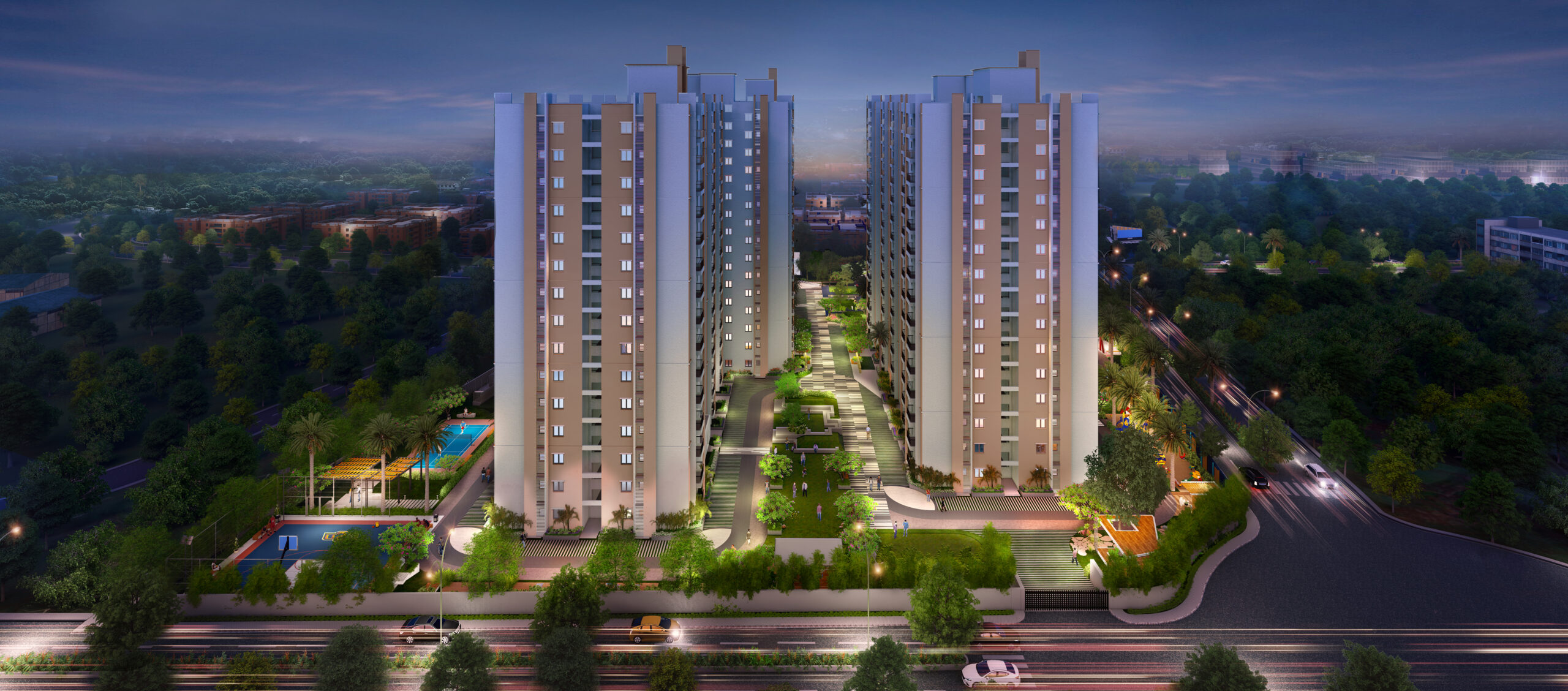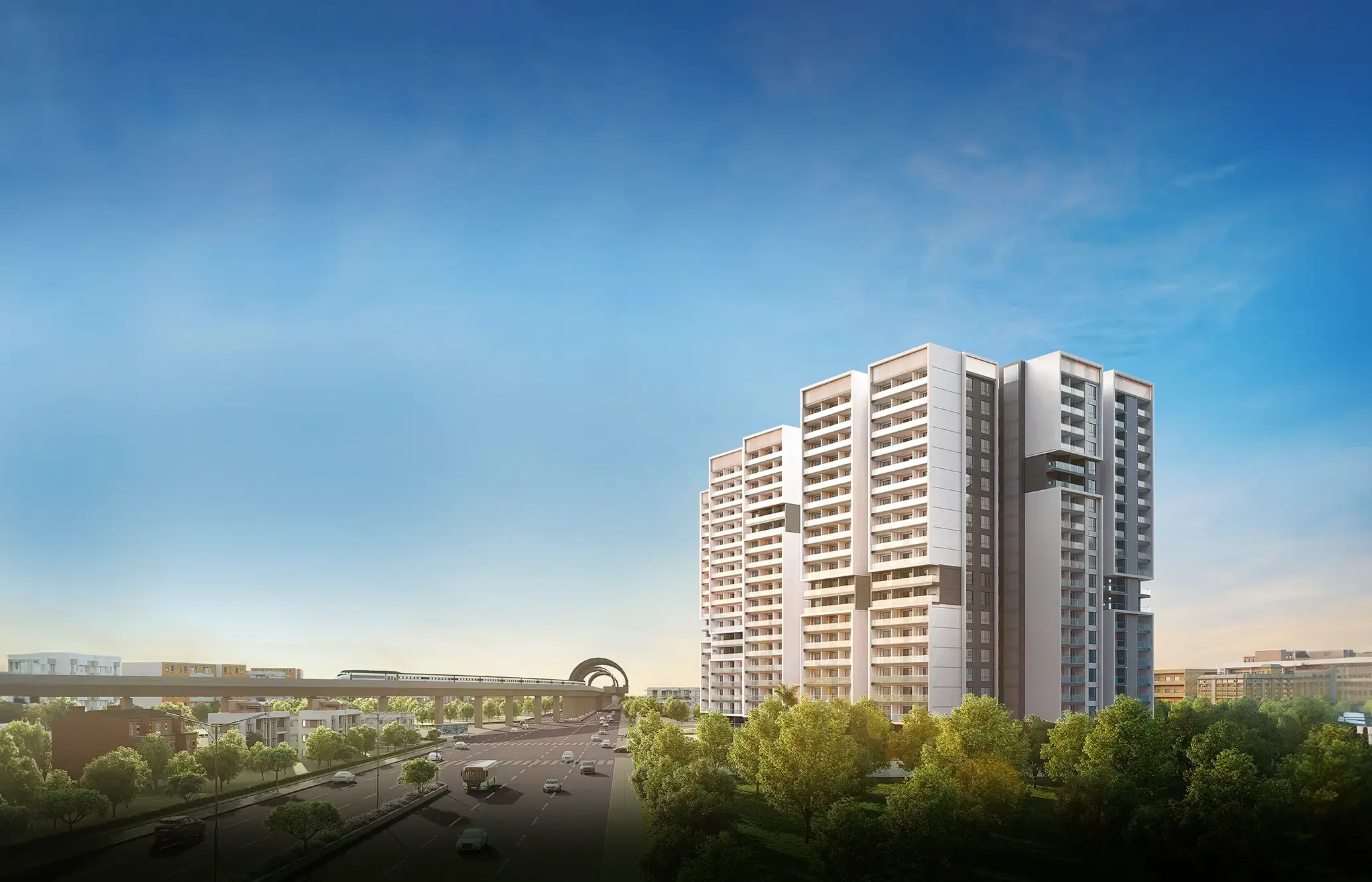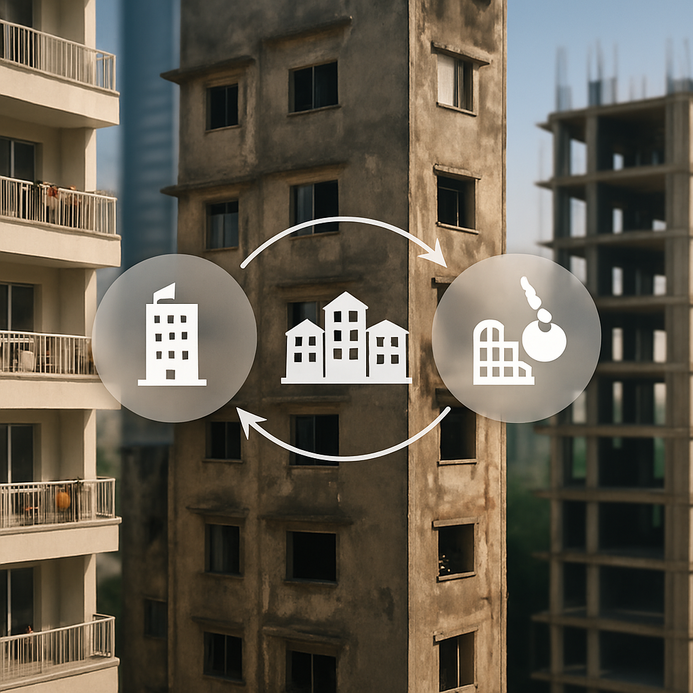From Blueprints to Flat Possession: A Homebuyer’s Complete Guide
Understanding the Journey: From Blueprints to Possession
Building high-rise apartments isn’t just about laying bricks; it’s a multi-step journey. It all starts with getting those architectural blueprints and ends with the moment you get the keys to your new flat. Let’s break it down into bite-sized bits.
1. Planning and Design Phase
This is where it all kicks off. Developers sketch out blueprints, laying out the vision and specs for the building. They also tackle permits and approvals from local authorities. Lately, there’s been a big push towards sustainability, with green building ideas picking up steam in India.
2. Land Preparation and Foundation
Once the plans get the green light, it’s time to prep the land. That means clearing the site, running soil tests, and setting the foundation. It’s all about stability, this foundation is key to how a property holds up over time.
3. Construction Phase
Now comes the fun part, constructing. Workers start up with concrete and steel, install plumbing and electrical systems, all while keeping safety front and center. It’s also when amenities like pools or gyms get incorporated.
4. Completion and Handover
Finally, when everything’s done, the builder sorts out the paperwork, including the all-important flat possession letter, which is essentially the official handoff from builder to buyer. You can check out a well-structured format for possession letters here.
5. Legal Documentation and Ownership Transfer
Good news for buyers! You’ll need to make sure the completion certificate and occupancy certificate are in check. These docs basically verify that your new apartment is legal and livable. That possession letter? Yeah, that’s your ticket to ownership.
6. Move-in and Settling In
Time to move in! This marks the official switch from construction to ownership. You might find yourself wanting to do some renovations to make it feel more like home.
| Milestone | Key Focus | Important Document |
|---|---|---|
| Planning and Design | Approvals and blueprints | Building Plans |
| Land Preparation | Site clearance and foundation | Soil Test Reports |
| Construction Phase | Building and amenities | Structural Blueprints |
| Completion | Handover process | Flat Possession Letter |
| Ownership Transfer | Legal documentation | Completion and Occupancy Certificates |
| Moving In | Settling into the new space | Home Inspection Report |
Understanding each step is crucial. It clears up ownership issues and helps sidestep disputes over unfinished projects. Always know your rights, folks! Remember, builders can’t just shove you into your flat without a completion certificate, check out this source for more info.
For additional guidance on the whole flat possession process, take a look at these tips or review important considerations before diving in.
Securing Approvals: The Crucial First Step
So, before any construction can even think about starting, you gotta score those legal and regulatory approvals. They’re the backbone of the whole operation, making sure everything’s above board and safe. You’ve got building permissions, layout approvals, and environmental clearances to tackle.
Essential Approvals:
1. Building Permission: This comes from the local municipal authorities and confirms your plans meet the necessary codes.
2. Zoning Permissions: Think of this as a green light on how a plot can be used, makes sure your plans align with local land use guidelines.
3. Environmental Clearance: This one’s important for projects that might affect the environment, ensuring you follow green practices.
Common Challenges:
– Sometimes, delays in getting these approvals can put the brakes on projects. That means financial losses and missed flat possession timelines.
– Missing or incorrect documentation? Yeah, that can lead to rejections quicker than you’d think.
| Approval Type | Authority/Body | Required Documents |
|---|---|---|
| Building Permission | Municipal Corporation | Building plans, application form, property title deed |
| Zoning Permissions | Local Town Planning Authority | Land use certificates, site plan |
| Environmental Clearance | Ministry of Environment | Environmental Impact Assessment (EIA), project reports |
It’s smart for developers to keep their ducks in a row during the application process. When documents are prepped right, approvals can come through faster, helping everyone stay on track for flat possession.
Laying the Foundation: Building on Solid Ground
A strong foundation is basically the bedrock (pun intended!) of any high-rise construction, it’s a game changer for durability. Excavation is the first step, removing topsoil to hit solid ground. This pretty much sets the stage for how deep and what kind of foundation you need.
After you’ve poked around in the dirt, it’s time for soil testing. Knowing your soil’s bearing capacity, moisture levels, and whatnot is crucial. It helps engineers design a foundation that’s got your back when the building starts climbing.
Common Soil Tests
| Soil Test | Purpose |
|---|---|
| Standard Penetration Test (SPT) | Determines soil bearing capacity |
| Particle Size Distribution | Assesses soil gradation for drainage |
| Proctor Compaction Test | Evaluates soil compaction for load |
Once testing wraps up, you lay the foundation, whether it’s shallow or deep, dependent on how much weight it’s gonna bear.
Routine stuff includes a flat possession letter, a key document that marks the official ownership transfer from builder to buyer when the construction is done. Check out this article for tips on what a proper format should look like.
So, knowing the groundwork stages keeps things smooth and steady, leading you to a hassle-free flat possession down the line. For more insights on navigating this journey, have a look at this guideline.
Constructing the Superstructure: Reaching New Heights
Taking the leap from foundation to superstructure is where things get real. This part involves the framework, the columns, floors, and walls that essentially shape your high-rise. Structural engineers are key in this phase, making sure everything is safe and compliant.
Key Construction Techniques and Materials
1. Concrete and Reinforcement: Reinforced cement concrete (RCC) mixes strength and resilience, handling heavy loads perfectly.
2. Steel Framework: Steel beams and columns take things up a notch. They allow heights to skyrocket while staying flexible.
3. Formwork Techniques: Traditional formwork is being swapped out for modern methods like Mivan formwork, which allows quick and high-quality slab casting.
4. Curtain Walls: These non-structural beauties allow for large panes of glass, brightening spaces while looking sleek.
5. Foundation Systems: Deep foundations, think pile systems, are especially vital in cities where soils are a bit wobbly, stability is key.
Flat Possession Impact
The superstructure’s quality directly ties into flat possession. A strong build ensures timely completion and minimizes any snags. When buyers get their flat possession letter, it means the structure’s soundness is guaranteed.
| Material | Benefits | Common Use Cases |
|---|---|---|
| Reinforced Concrete | Strength and fire resistance | Columns, floors, and walls |
| Steel | Flexibility and tensile strength | High-rise beams and frames |
| Curtain Wall System | Aesthetic appeal and insulation | Exterior facades |
In wrapping this up, nailing down the superstructure is essential in high-rise building. It paves the way for a smooth flat possession experience. Understanding materials and methods helps buyers feel confident about the quality of what they’re getting. More property possession insights and checklists await over on our site!
Finishing Touches: MEP, Interiors, and the Final OC
Finally, we’re nearing the finish line! These last stages center on the crucial systems and design details that make a living space comfortable and functional. You can’t overlook the Mechanical, Electrical, and Plumbing (MEP) systems, think HVAC, lighting, water supply, and waste management.
MEP Systems Breakdown
| System | Function | Key Considerations |
|---|---|---|
| Mechanical | HVAC systems for heating and cooling | Energy efficiency, maintenance needs |
| Electrical | Lighting and electrical wiring | Safety protocols, energy consumption |
| Plumbing | Water supply and drainage | Quality of materials, leak prevention |
After MEP systems are set and tested, it’s all about the interiors. Flooring choices, wall colors, and fixtures are huge for setting the apartment’s vibe and value. Homeowners should aim for durable options that match their style.
Obtaining the Occupancy Certificate (OC)
Before you take your keys and move in, snagging the Occupancy Certificate (OC) is a must. This doc tells you that the building ticks all safety and construction boxes. Here’s the scoop on what to do:
1. Check that all safety measures are locked down.
2. Make sure MEP systems are up and running.
3. Grab the necessary paperwork, plans, engineering reports, you name it.
It’s crucial to know that without the OC, flat possession could get touchy legally if issues pop up. Just check this commentary from source to get the details.
The flat possession letter finalizes ownership, and it needs to be structured properly. Here’s what should be in there:
– Property Details: Flat number, address, builder info, keep it clear.
– Possession Date: List the day you get the keys.
– Condition of Property: Mention any work that might still be pending.
– Signatures: Don’t forget the signatures from both sides.
As you cruise towards flat possession, knowing these moving parts ensures a smoother transition into your new digs. For more guidance on property possession checks and buyers’ compliance topics, comprehensive resources are at your fingertips.
FAQ
What is a flat possession letter?
A flat possession letter is an official document that signifies the transfer of ownership from the builder to the buyer upon completion of the apartment’s construction.
Why is an occupancy certificate important?
An occupancy certificate (OC) confirms that the building complies with all the necessary safety and construction regulations and is safe for habitation.
What are the common challenges when securing approvals?
Common challenges include delays in processing approvals, incomplete documentation, and unexpected regulatory changes that may affect timelines.













